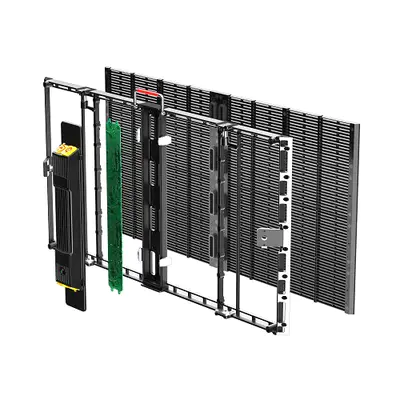How does transparent screen work?
The transparent screen is an amazing technology, and its working principle involves advanced display technology and optical principles. Before introducing how it works, let’s first understand the composition of a transparent screen.

Transparent screens usually consist of two main parts: the display panel and the transparent material. The display panel is typically a liquid crystal display (LCD), organic light-emitting diode (OLED) or other similar technology screen. Transparent material refers to the material used to support the display panel and maintain its transparency, usually glass or plastic.
The working principle of transparent screen is as follows:
1. Display technology: Transparent screens use highly advanced display technology, such as liquid crystal display or organic light-emitting diode technology. These technologies produce images without the need for a backlight, so in a transparent screen, light can pass through the display panel, giving the screen a transparent appearance.
2. Optical principle: The transparency effect of a transparent screen depends on two key factors: the transparency of the material and the image generation of the display panel. First, the transparent material itself must be sufficiently transparent so that light can pass through without much scattering or absorption. Second, the display panel must be able to produce an image without blocking the light behind it. This is usually accomplished by allowing the pixels to emit just enough light to produce an image without making the entire display panel opaque.
3. Backlight control: In some transparent screens, the brightness and direction of the backlight are precisely controlled so that only the image area emits light, while other areas remain transparent. This technology can enhance the transparency effect of transparent screens, and the transparency can be adjusted to suit different environments when needed.
To sum up, the working principle of a transparent screen is to use advanced display technology and optical principles to produce an image while maintaining the transparency of the material, so that light can pass through the display panel, showing a transparent effect. This technology not only has wide applications in fields such as technology display, retail and outdoor advertising, but also provides new possibilities for designers and creative people.








